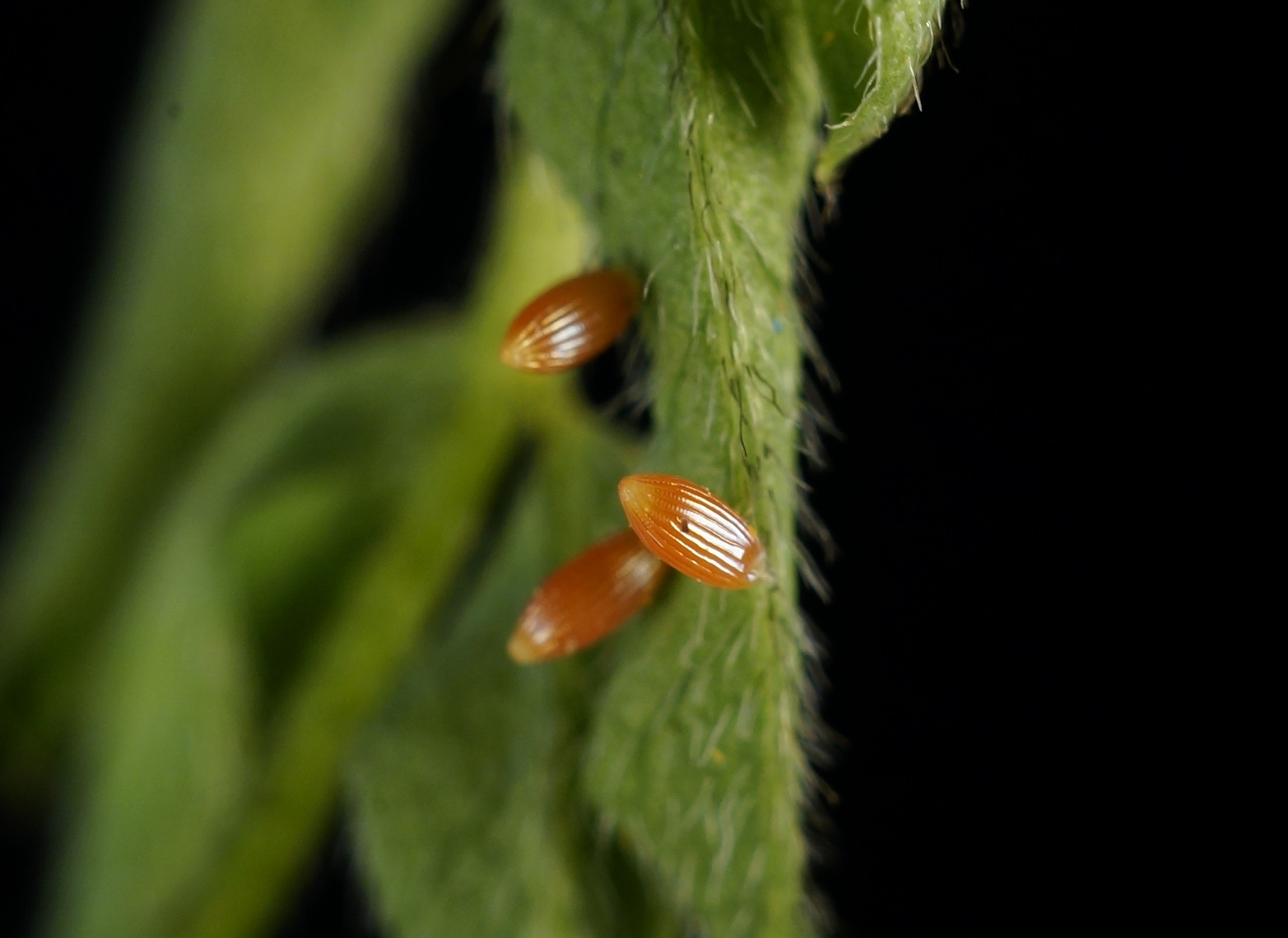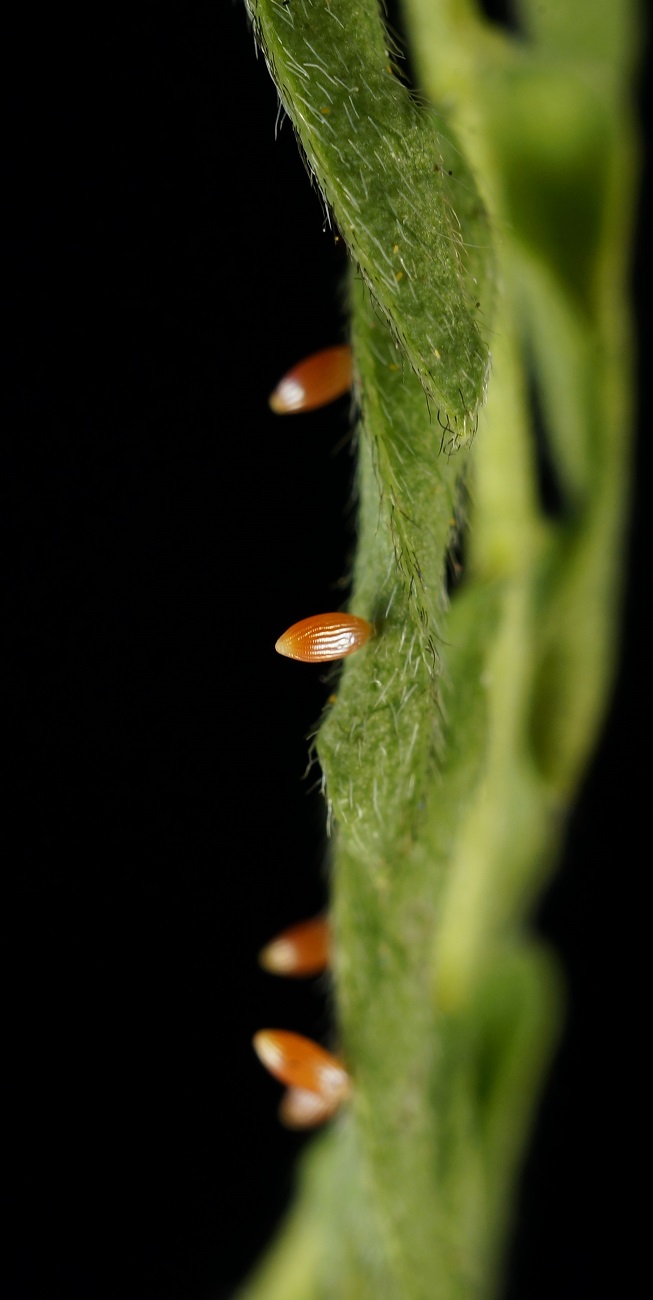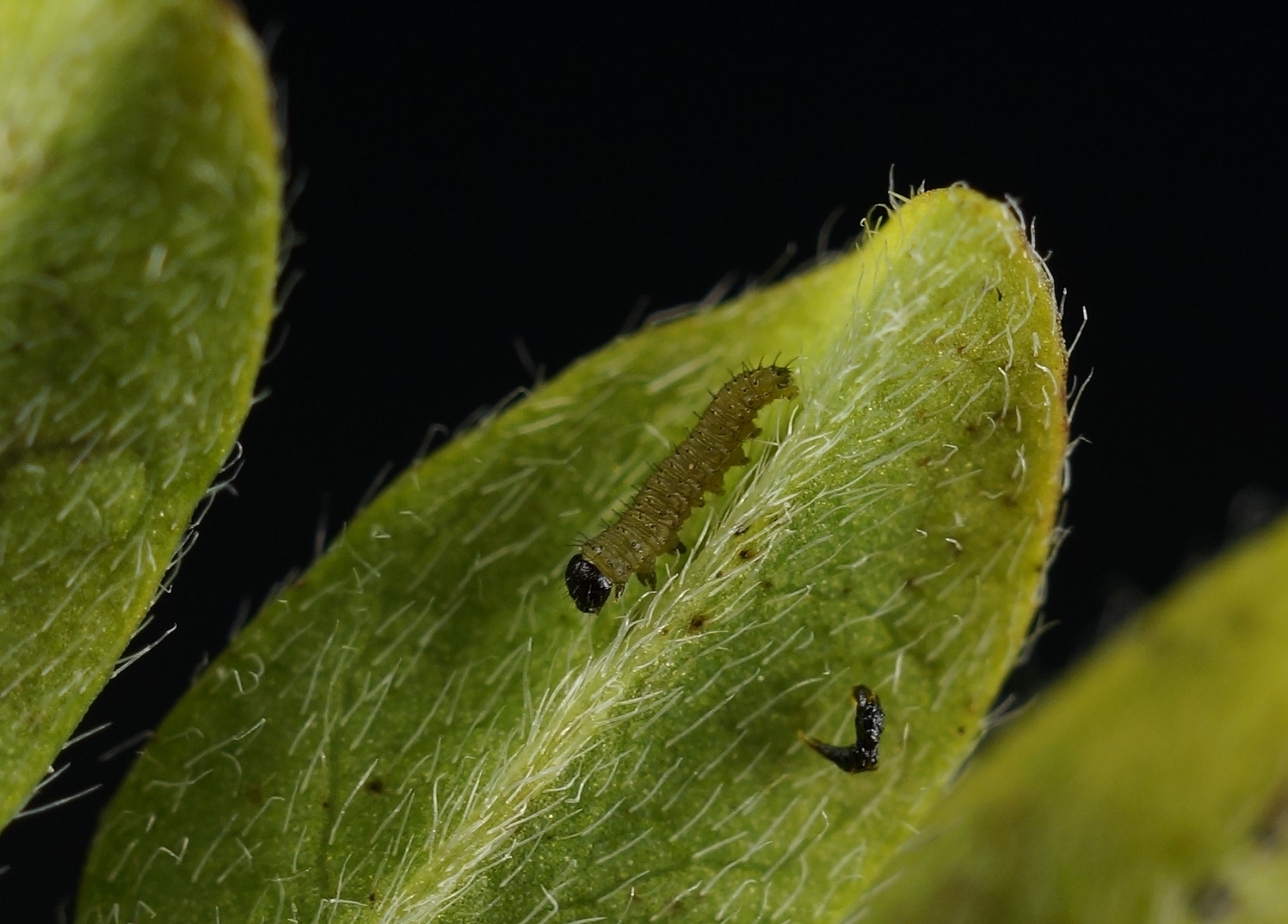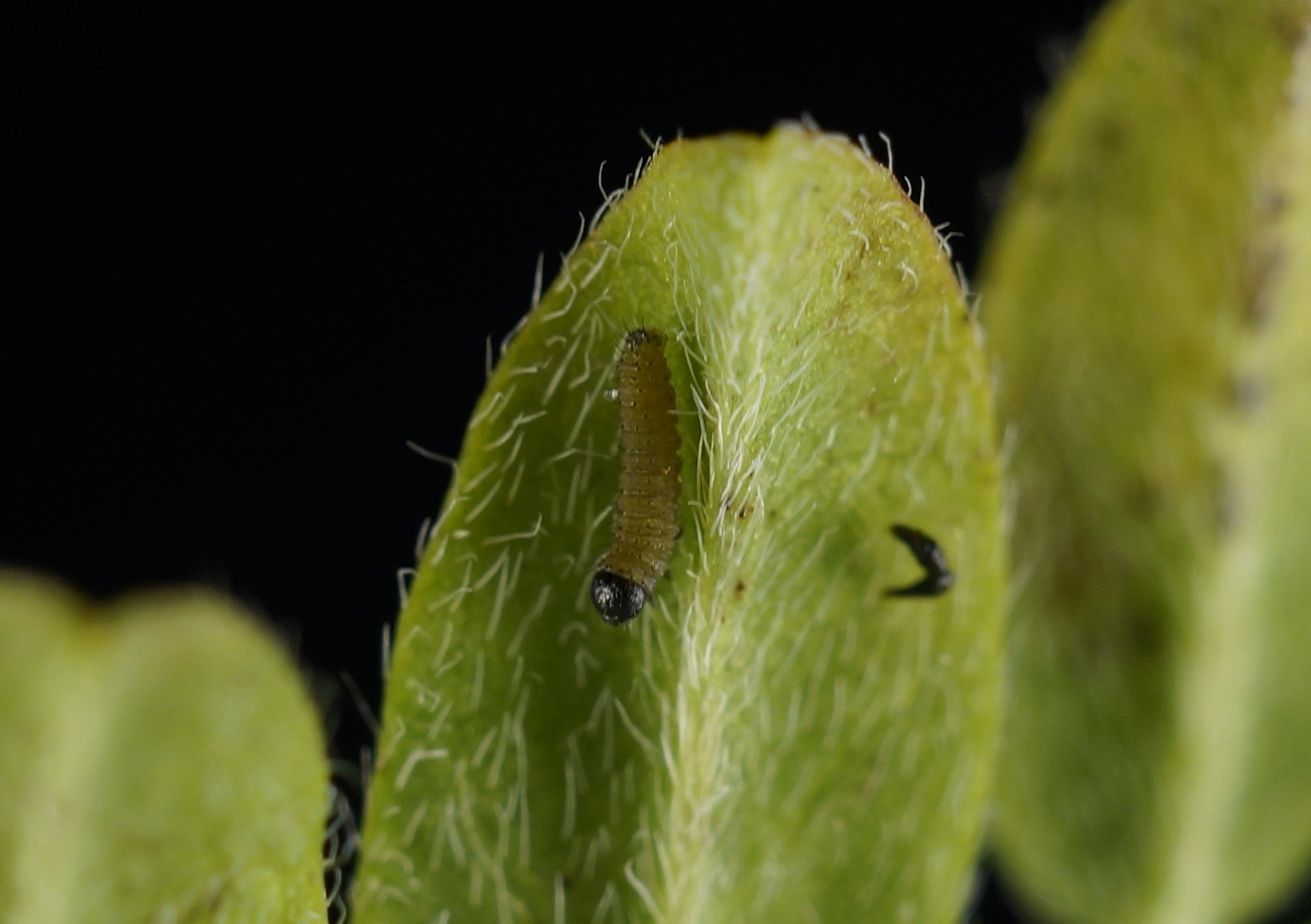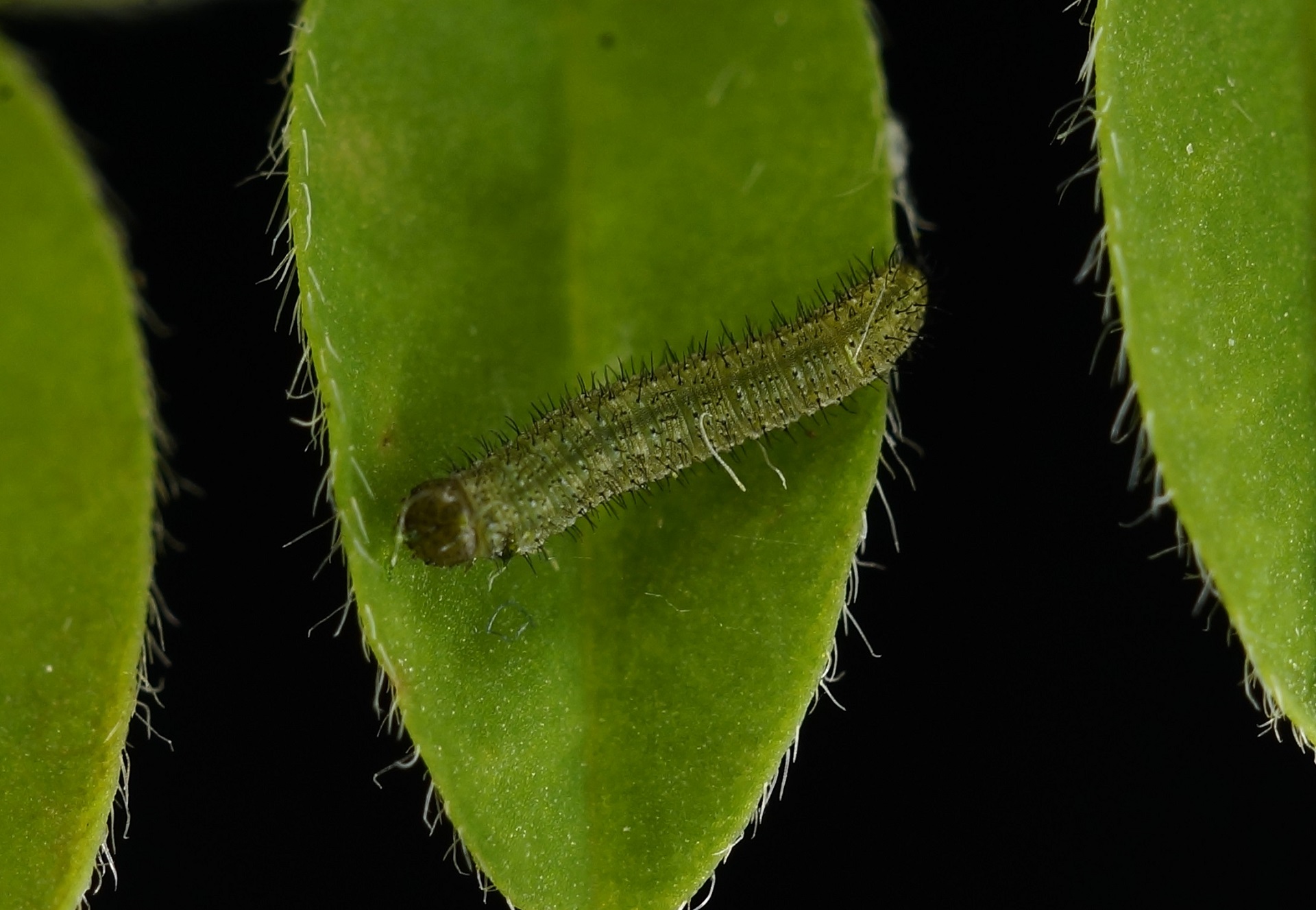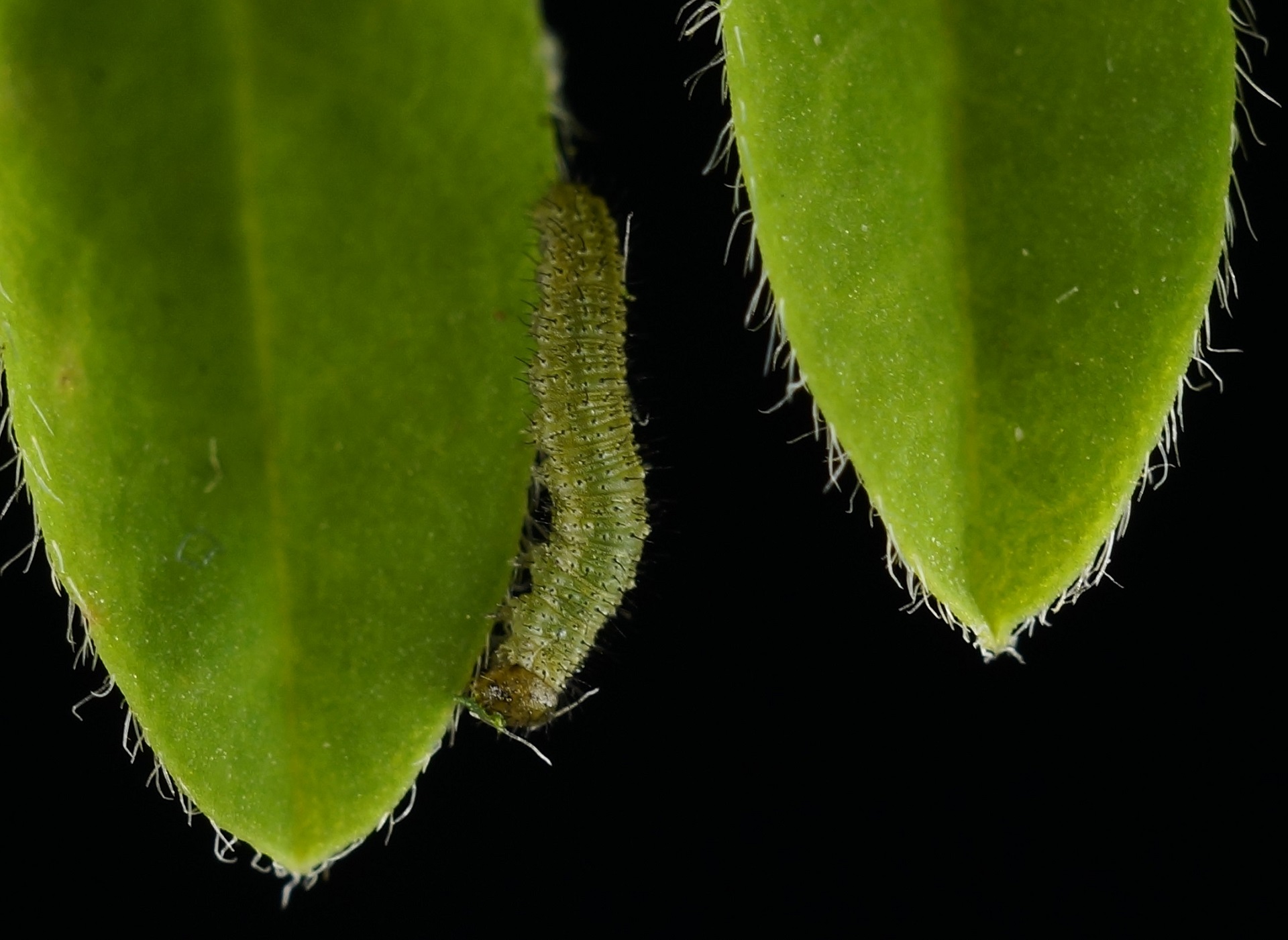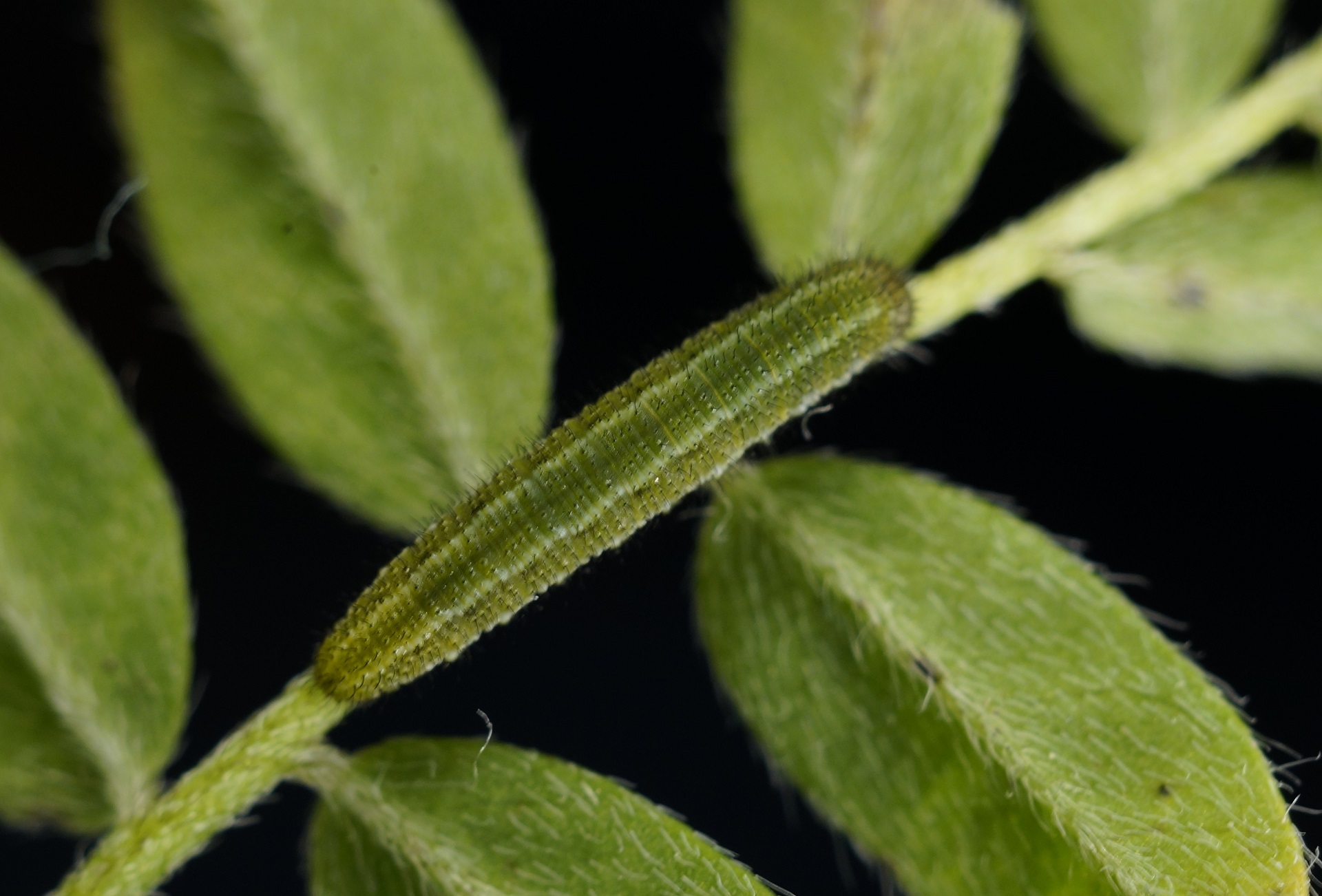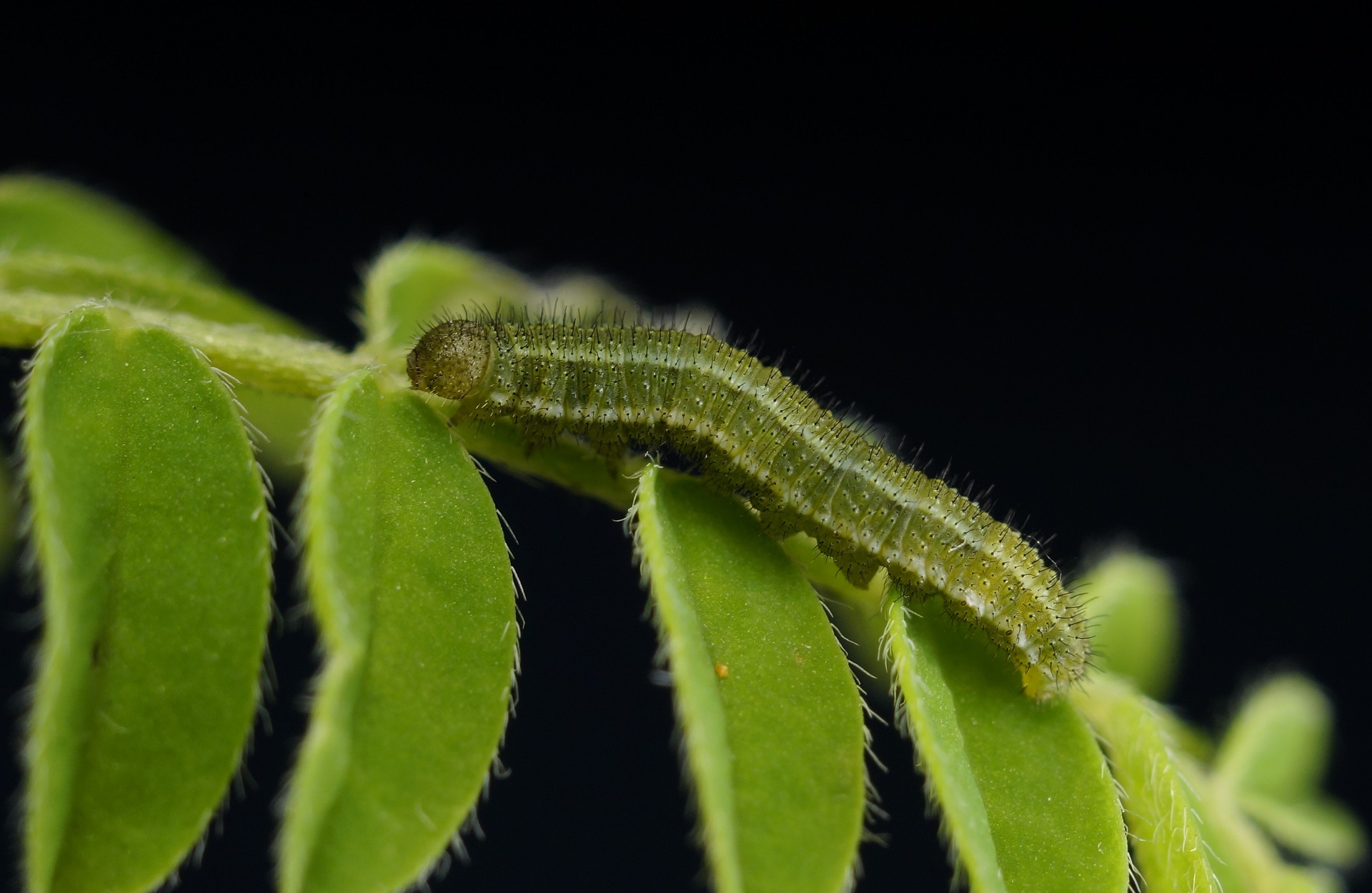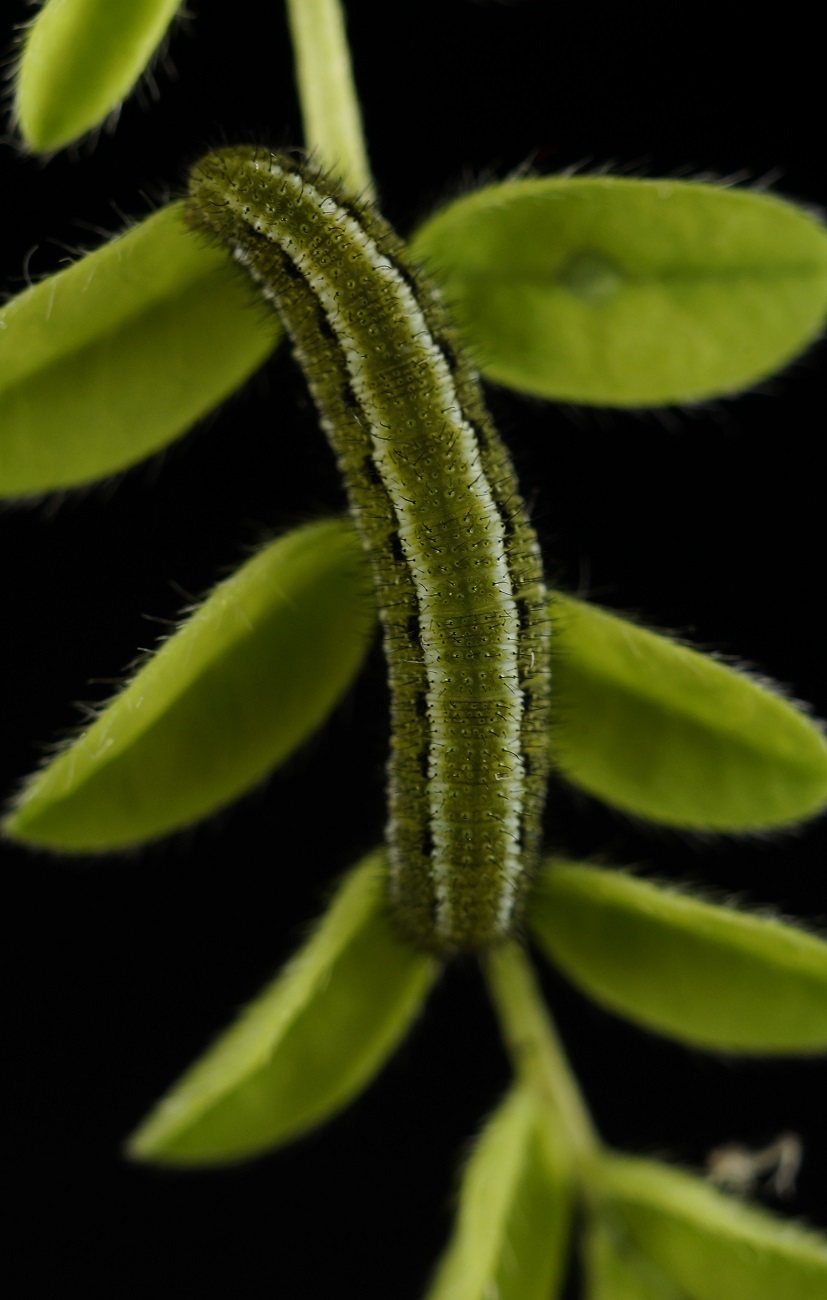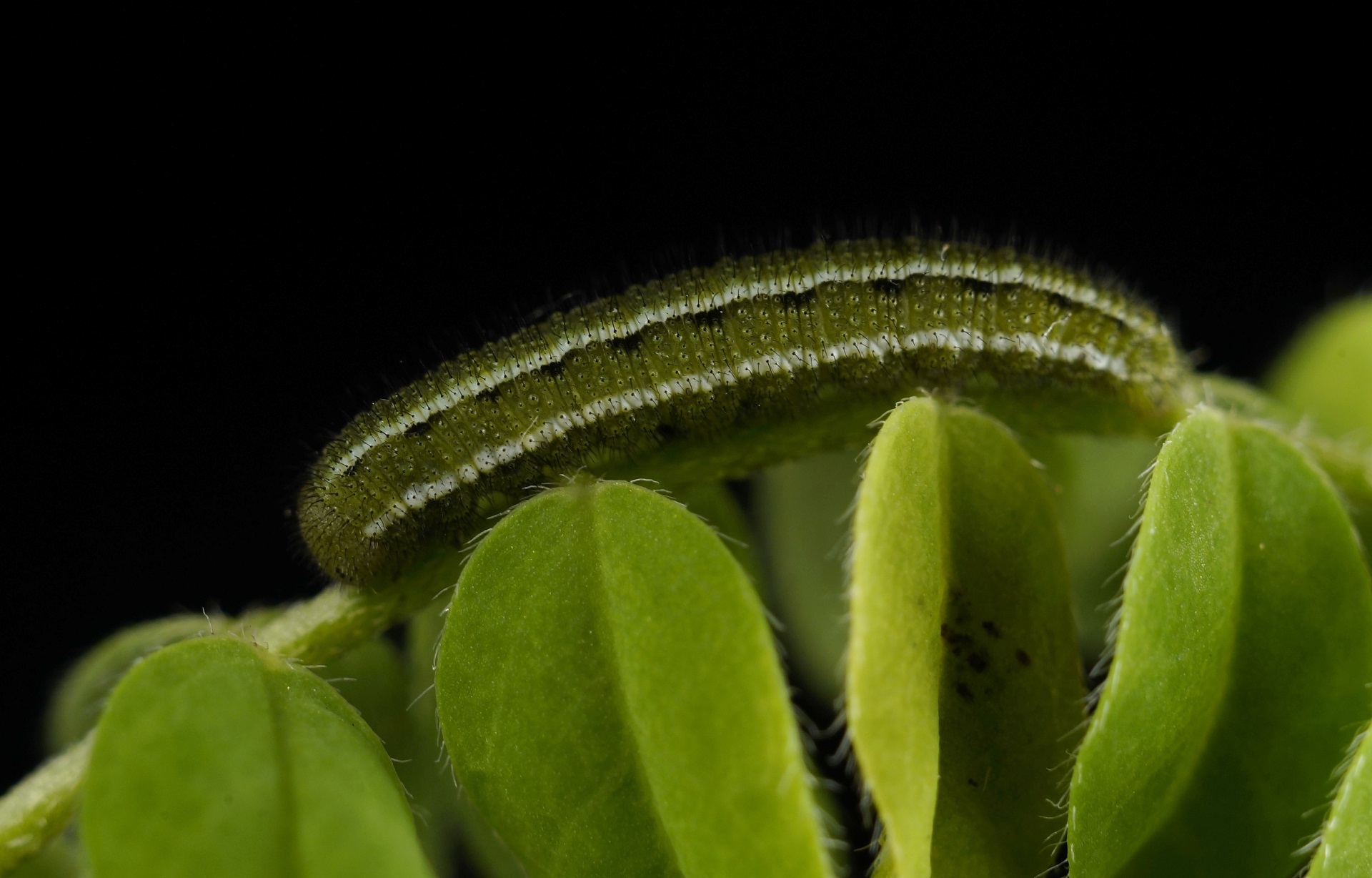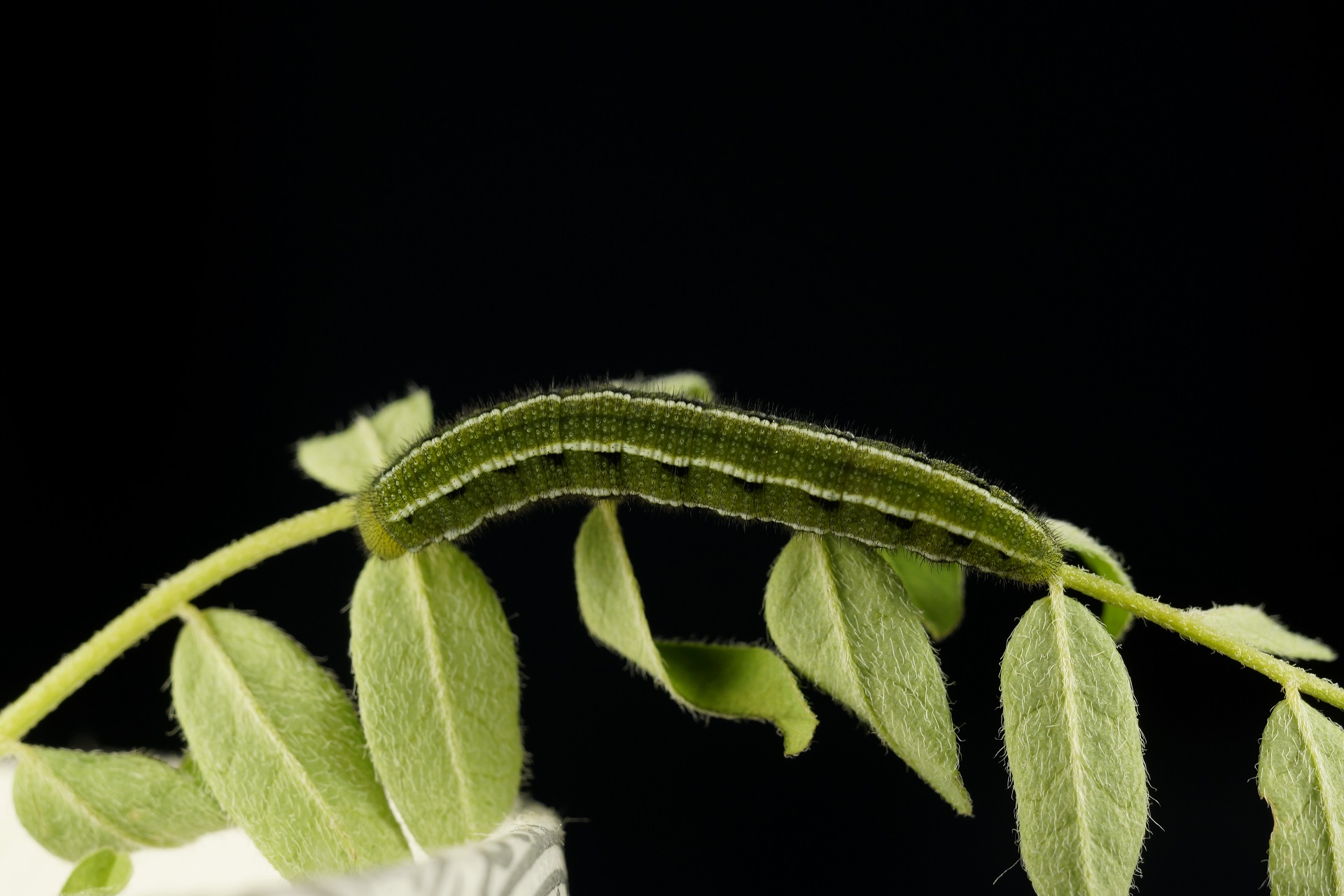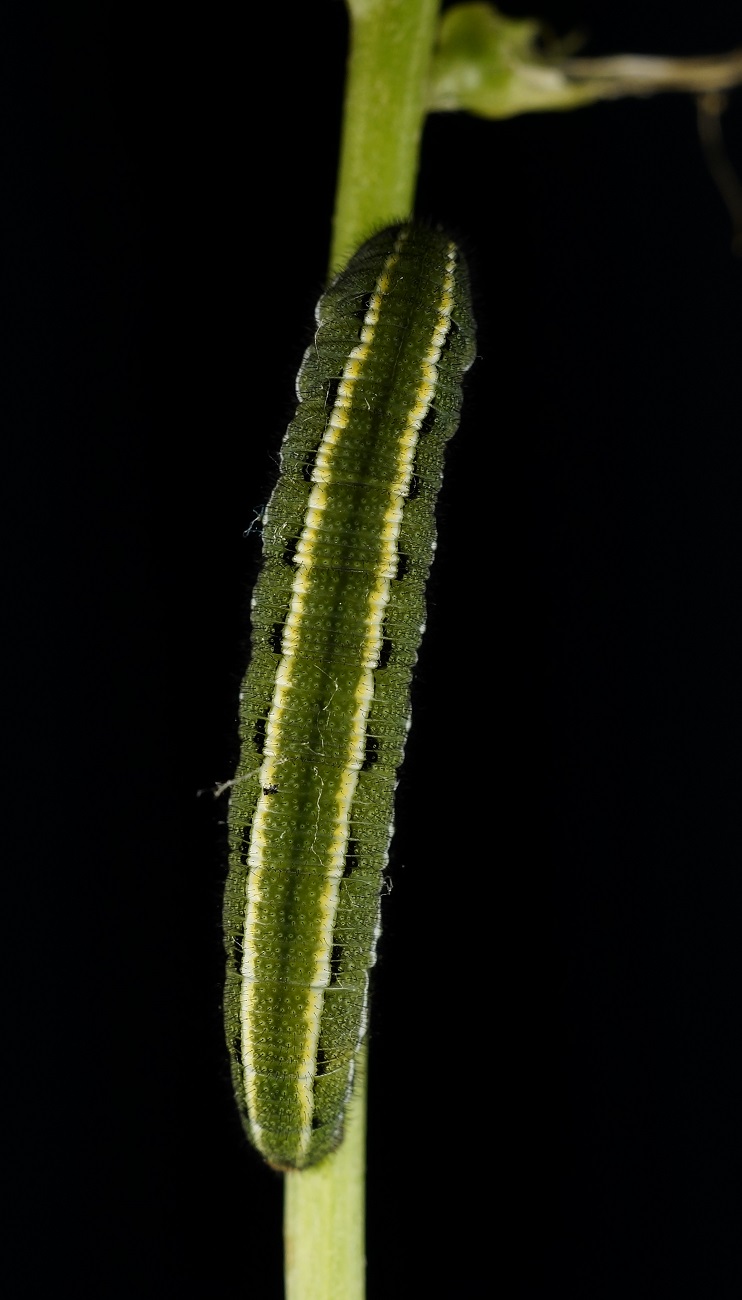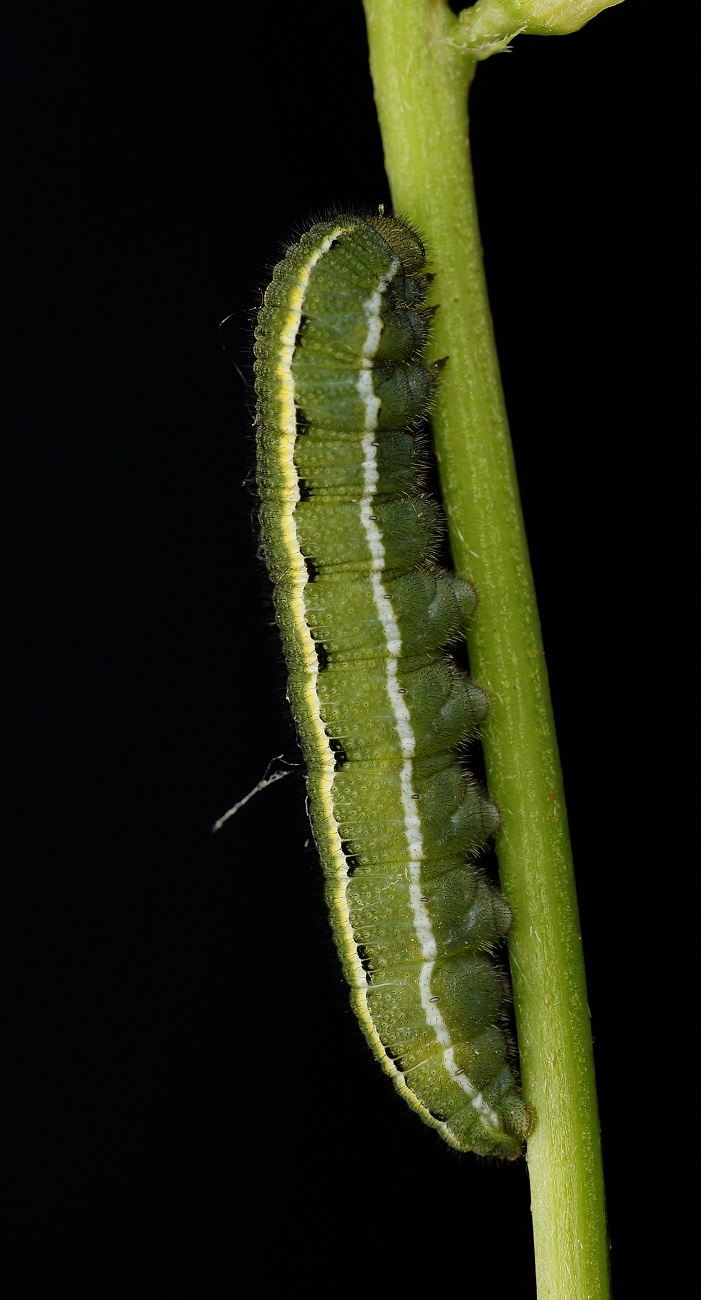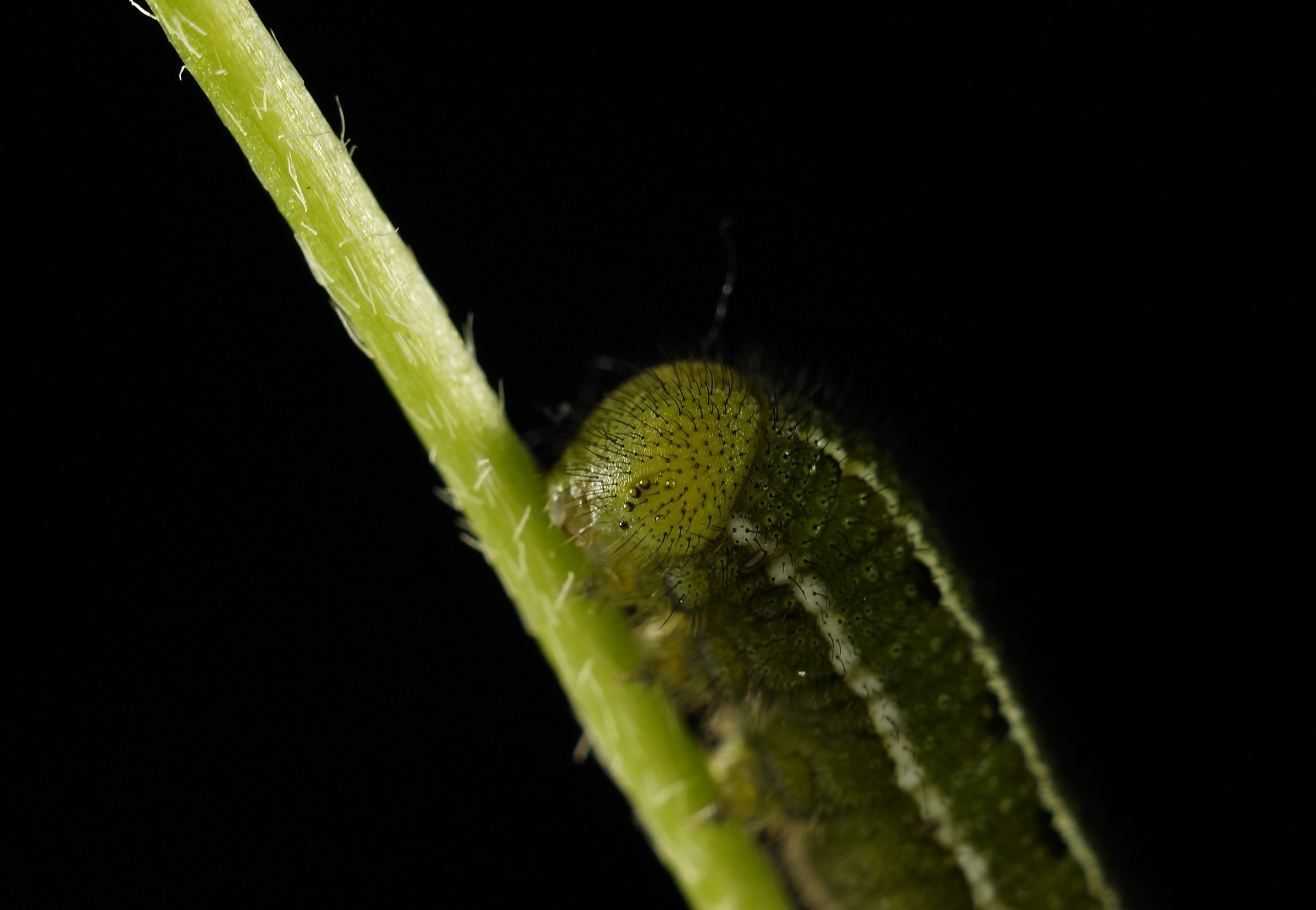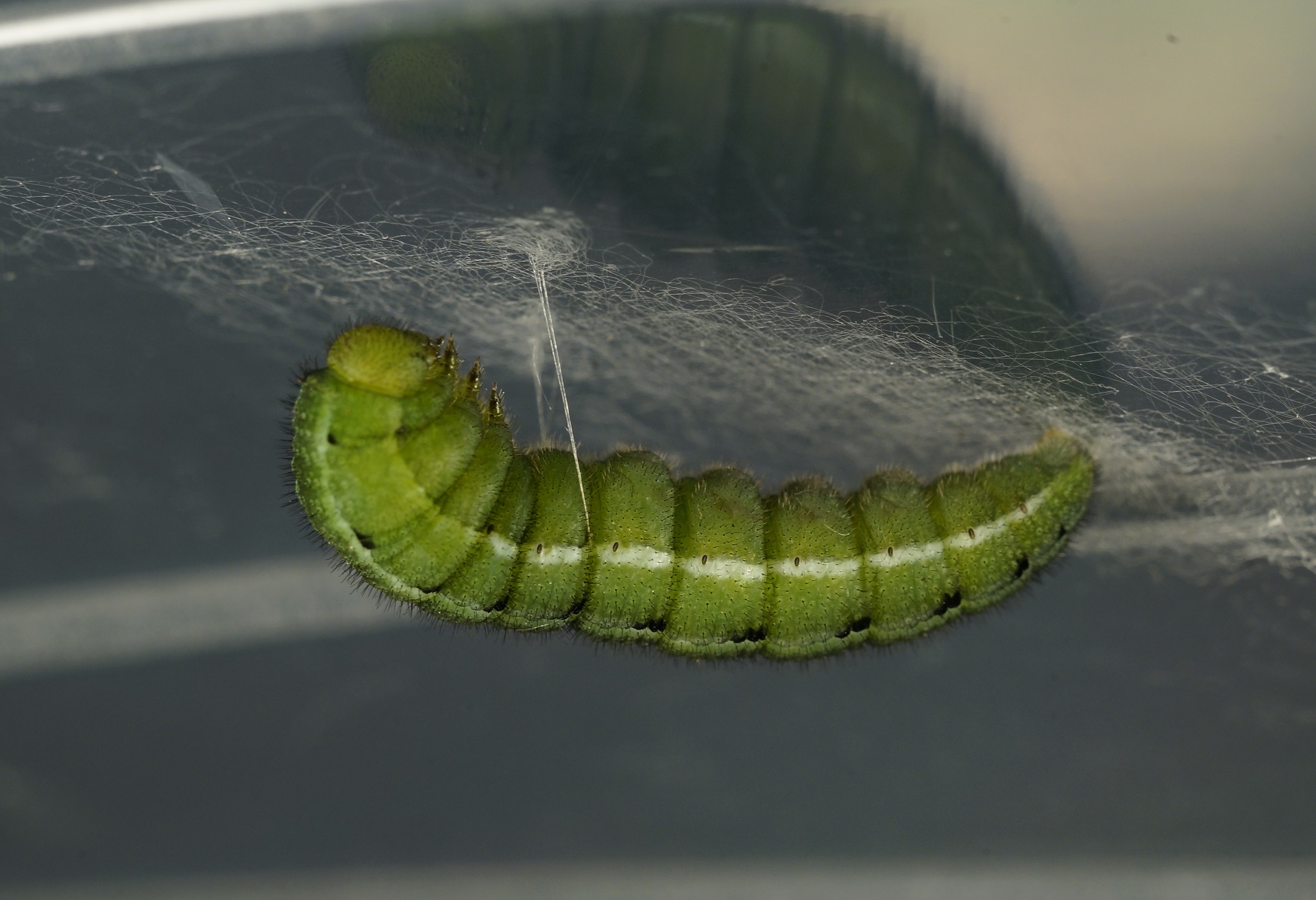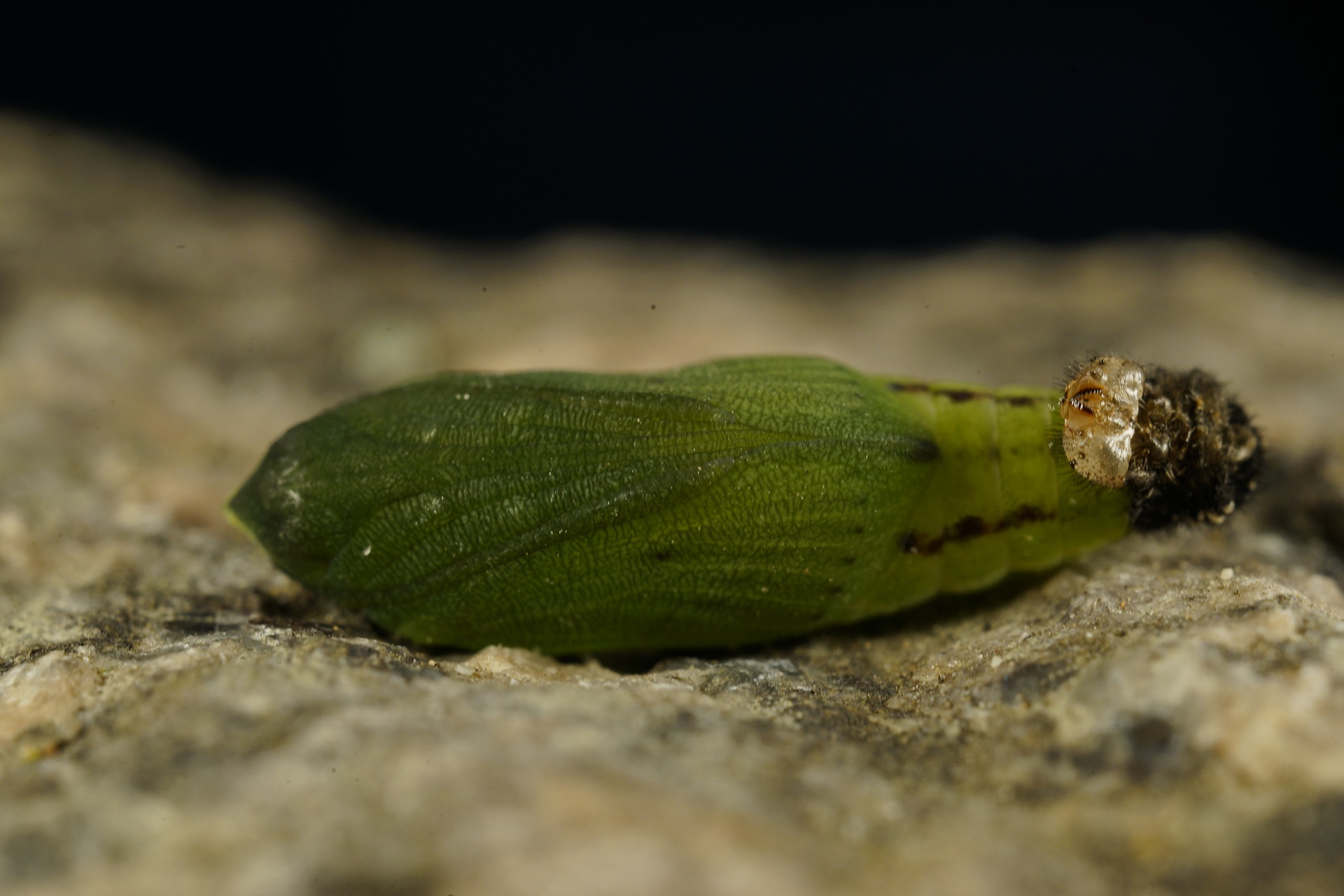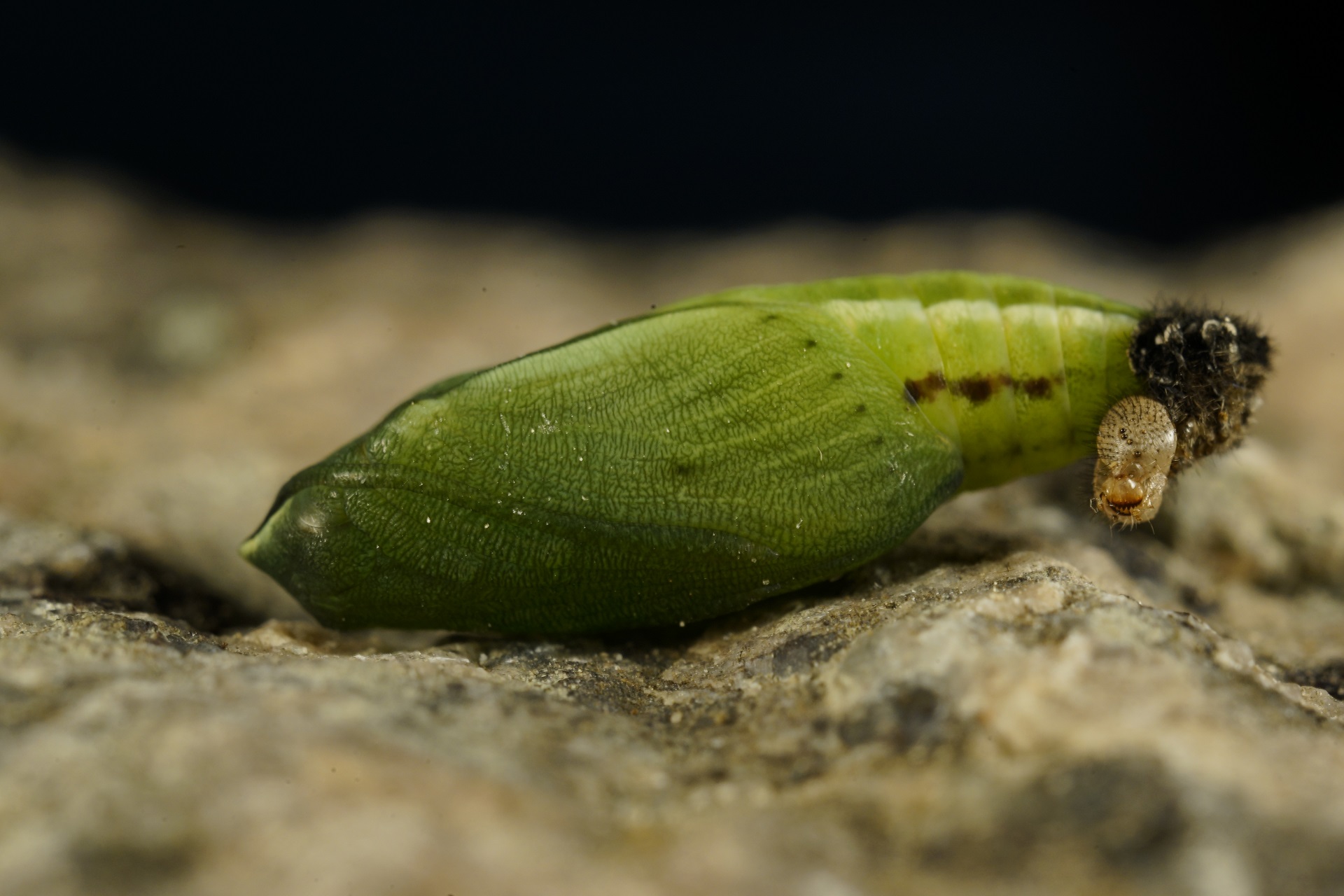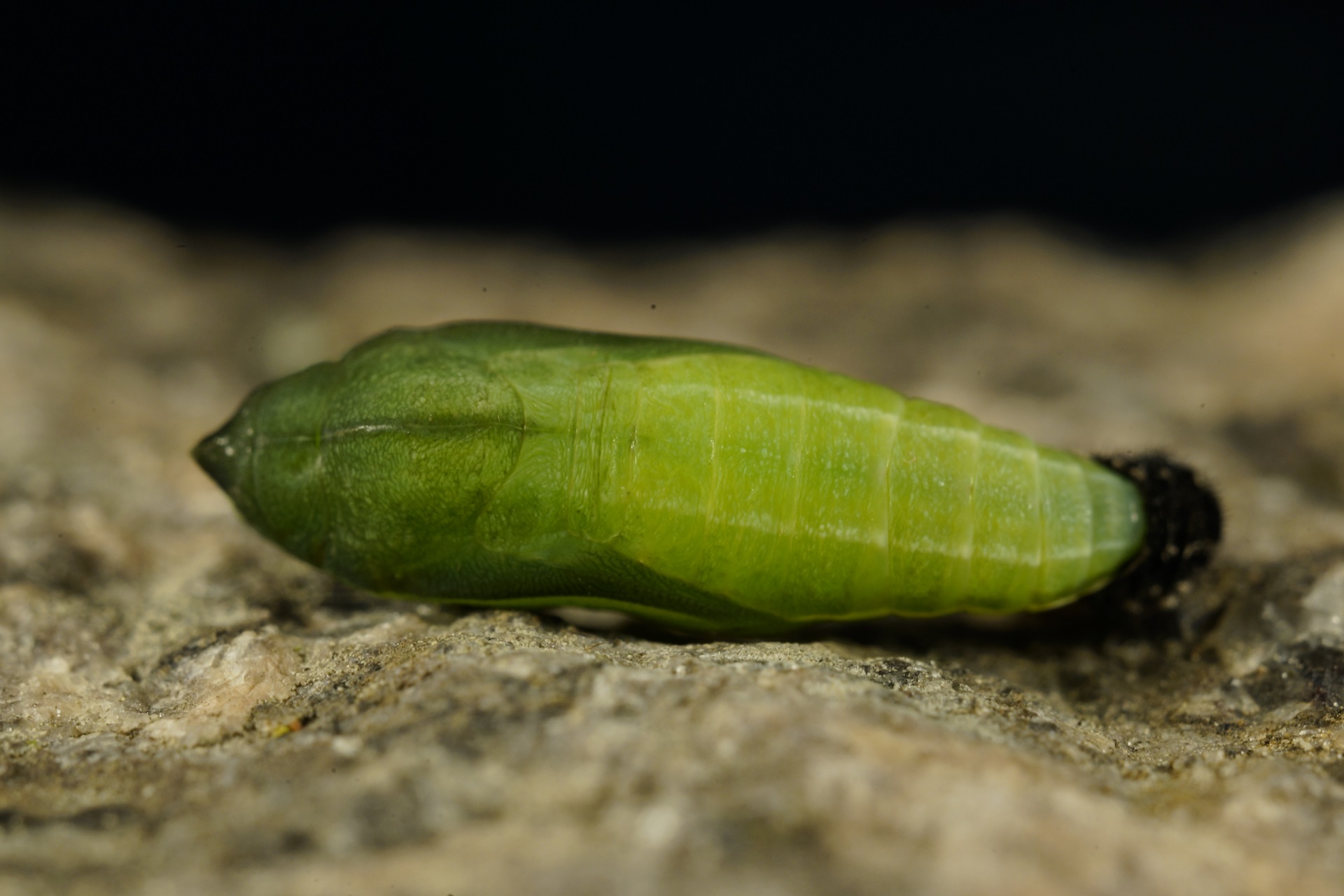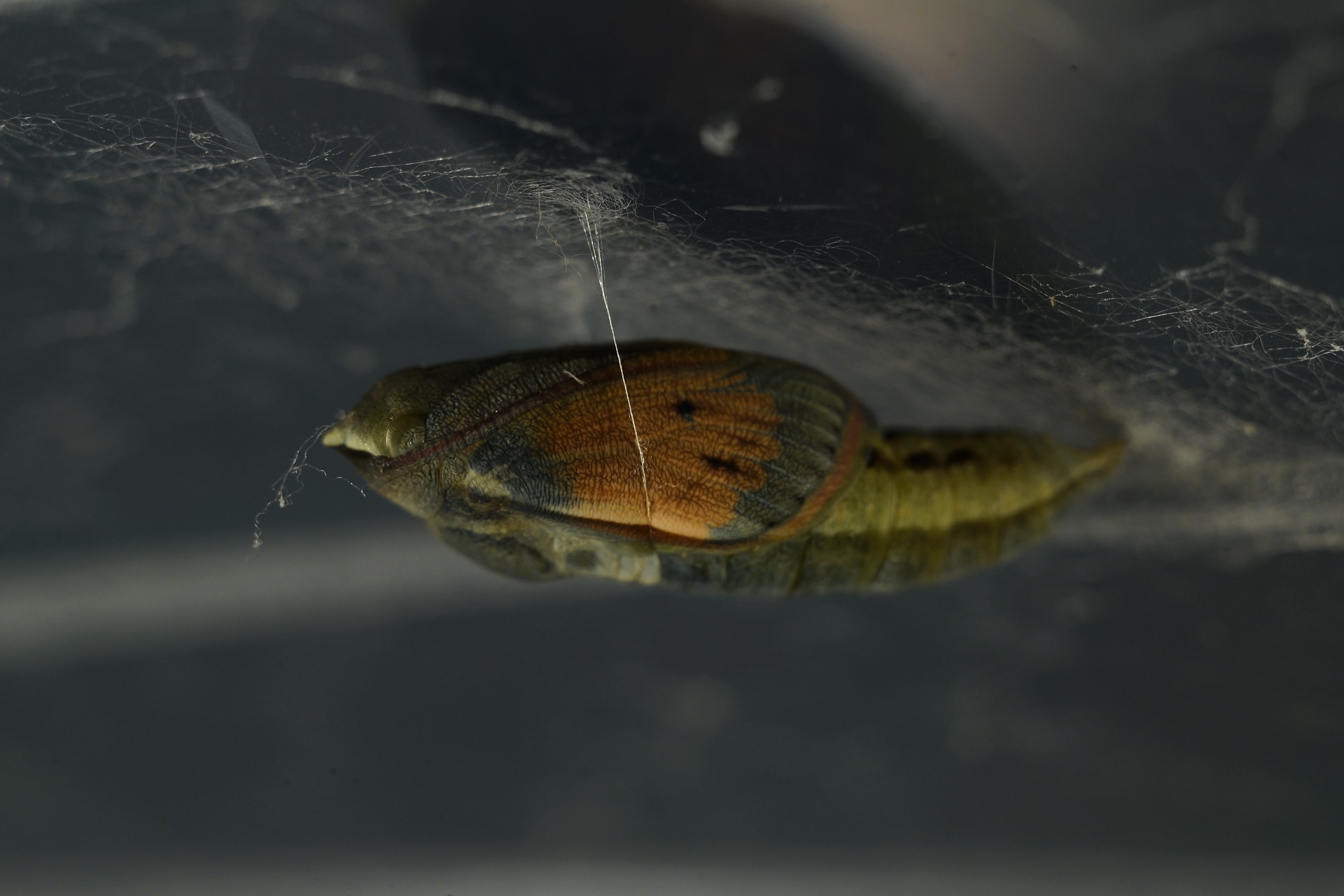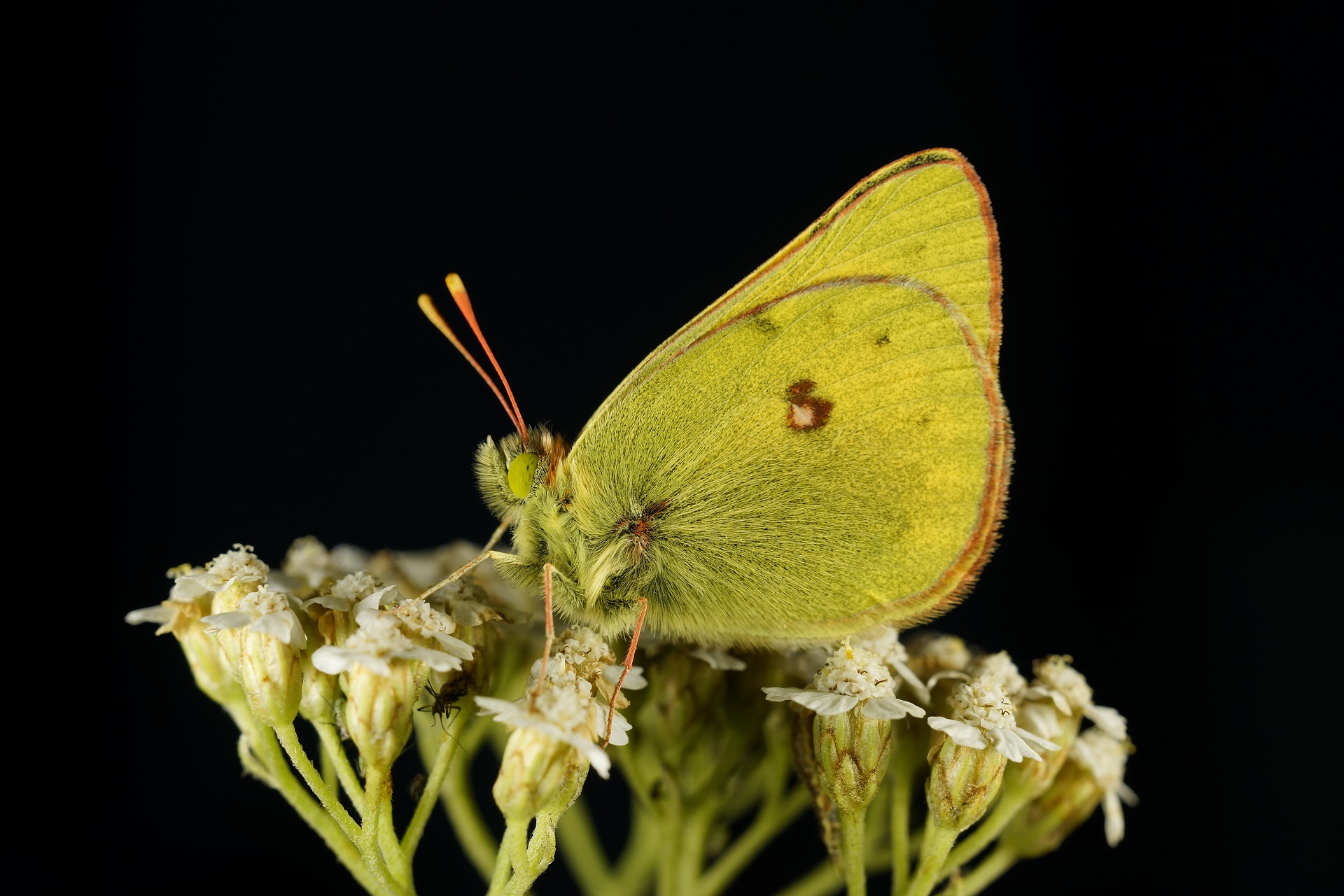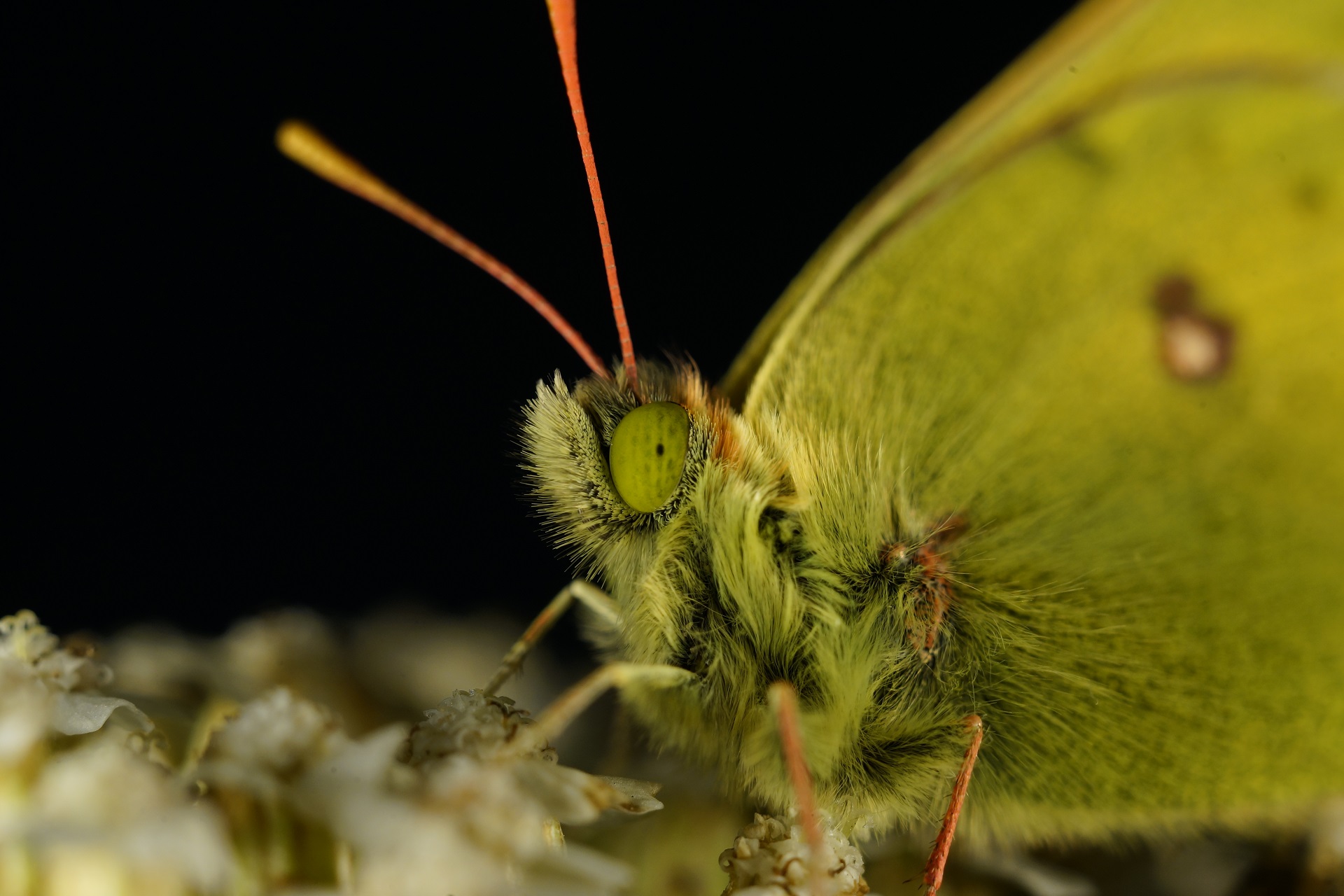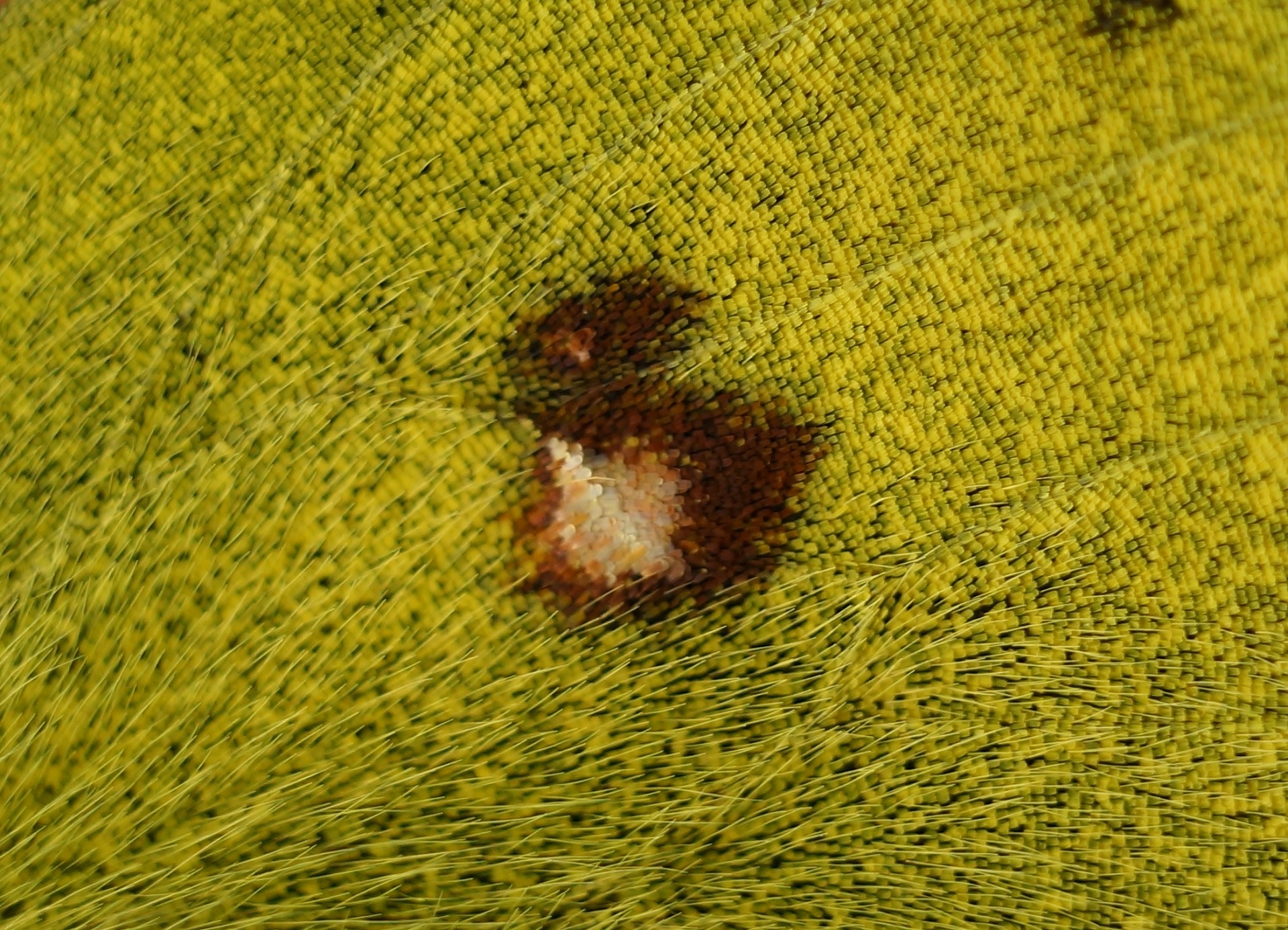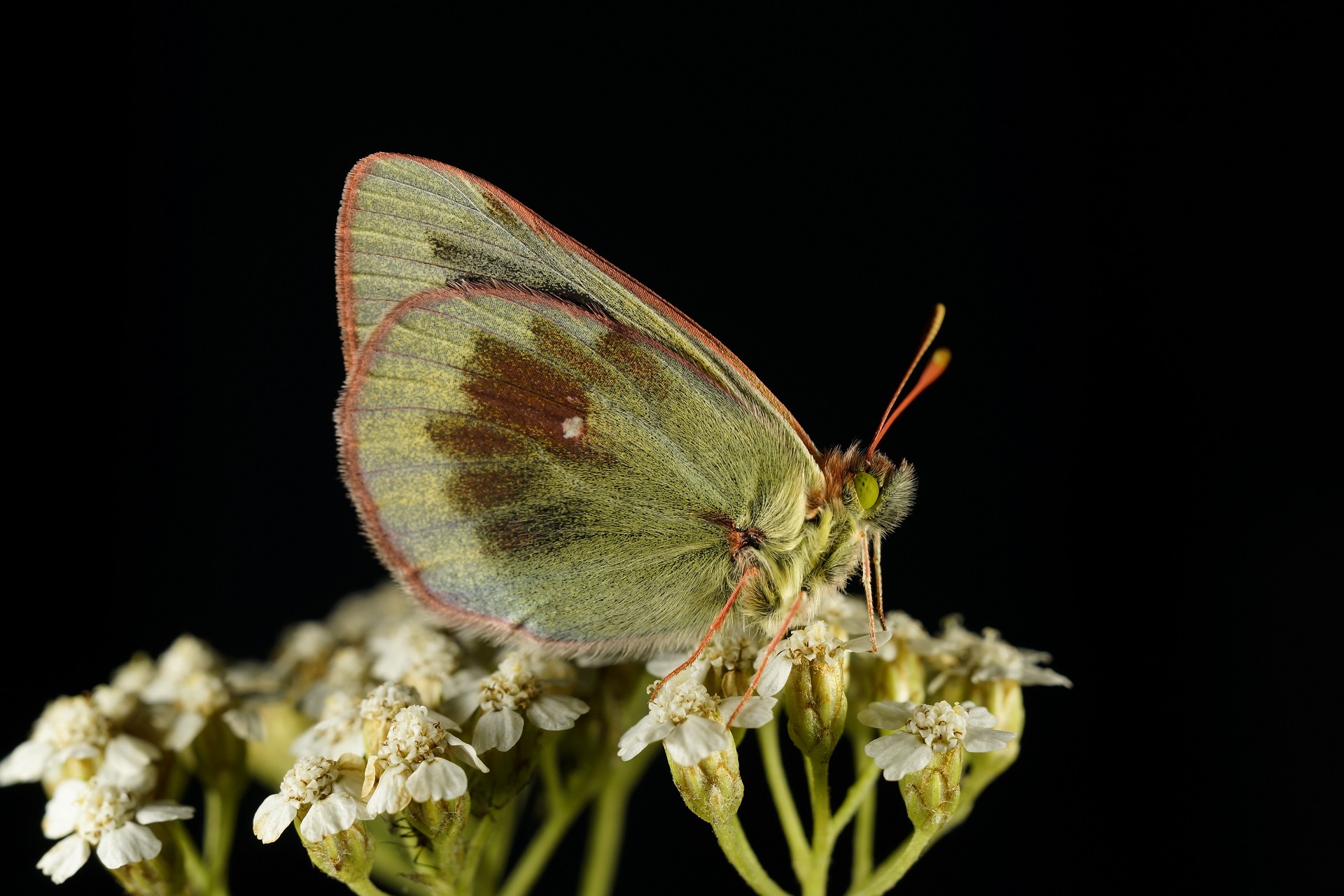Colias hecla
Hostplant: The hostplant is Astragalus alpinus. It does accept Astragalus glycyphyllos in captivity.
Lifecycle and behavior: The female deposited eggs easily in captivity, both on fresh and dead hostplant. The eggs used about 1 week to hatch, having a yellow color when newly deposited and later changing to a red color. Various sources online says that these hibernate at least once as larva, often twice. It all depends on the weather conditions up north. In my breeding some larva went all the way through to adults in the same year. The rest of the larva hibernated as L2 and L3. Larval stages lasted about 3,5 weeks and they molted 4 times. They were pre-pupa for 2 days and then pupa for about a week before hatching.
The adult butterfly is confined to the arctic part of Norway and usually flies in July. Depending on the weather conditions, it can be on the wing in late June and into August. I found one source online claiming that the adult butterfly can be seen as late as September in warm summers, which maybe imply that they are able to have a second generation in the wild if the conditions are right. As demonstrated in my breeding this might be the case.
Note: The Scandinavian populations are regarded as ssp. sulitelma. One female hatched as an aberrant, most likely due to temperature changes during the pupal stage. This was completely unintentional.

